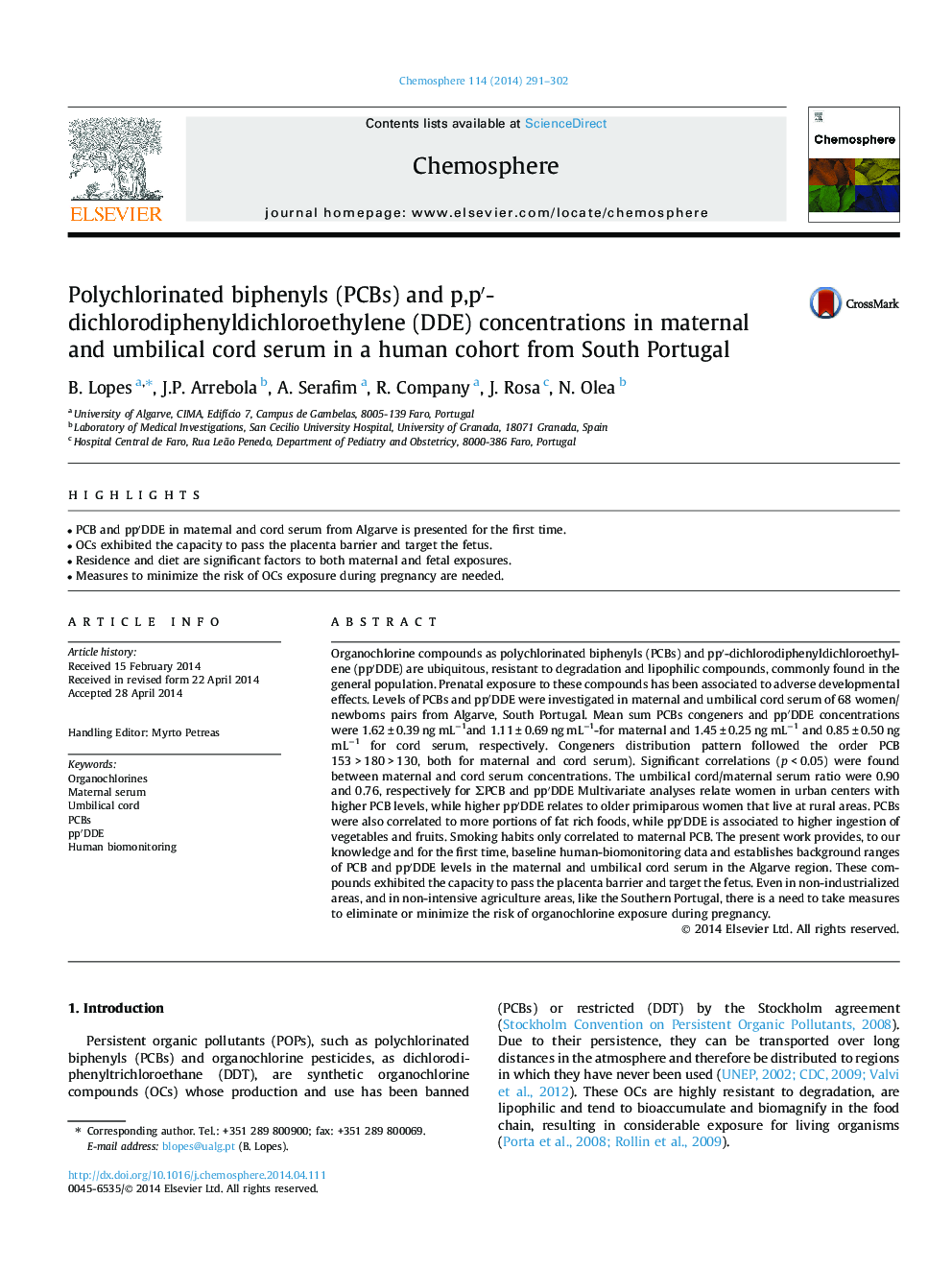| Article ID | Journal | Published Year | Pages | File Type |
|---|---|---|---|---|
| 6308983 | Chemosphere | 2014 | 12 Pages |
Abstract
Organochlorine compounds as polychlorinated biphenyls (PCBs) and ppâ²-dichlorodiphenyldichloroethylene (ppâ²DDE) are ubiquitous, resistant to degradation and lipophilic compounds, commonly found in the general population. Prenatal exposure to these compounds has been associated to adverse developmental effects. Levels of PCBs and ppâ²DDE were investigated in maternal and umbilical cord serum of 68 women/newborns pairs from Algarve, South Portugal. Mean sum PCBs congeners and ppâ²DDE concentrations were 1.62 ± 0.39 ng mLâ1and 1.11 ± 0.69 ng mLâ1-for maternal and 1.45 ± 0.25 ng mLâ1 and 0.85 ± 0.50 ng mLâ1for cord serum, respectively. Congeners distribution pattern followed the order PCB 153 > 180 > 130, both for maternal and cord serum). Significant correlations (p < 0.05) were found between maternal and cord serum concentrations. The umbilical cord/maternal serum ratio were 0.90 and 0.76, respectively for ΣPCB and ppâ²DDE Multivariate analyses relate women in urban centers with higher PCB levels, while higher ppâ²DDE relates to older primiparous women that live at rural areas. PCBs were also correlated to more portions of fat rich foods, while ppâ²DDE is associated to higher ingestion of vegetables and fruits. Smoking habits only correlated to maternal PCB. The present work provides, to our knowledge and for the first time, baseline human-biomonitoring data and establishes background ranges of PCB and ppâ²DDE levels in the maternal and umbilical cord serum in the Algarve region. These compounds exhibited the capacity to pass the placenta barrier and target the fetus. Even in non-industrialized areas, and in non-intensive agriculture areas, like the Southern Portugal, there is a need to take measures to eliminate or minimize the risk of organochlorine exposure during pregnancy.
Related Topics
Life Sciences
Environmental Science
Environmental Chemistry
Authors
B. Lopes, J.P. Arrebola, A. Serafim, R. Company, J. Rosa, N. Olea,
